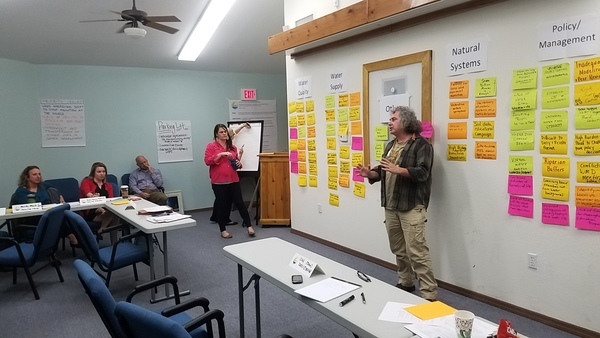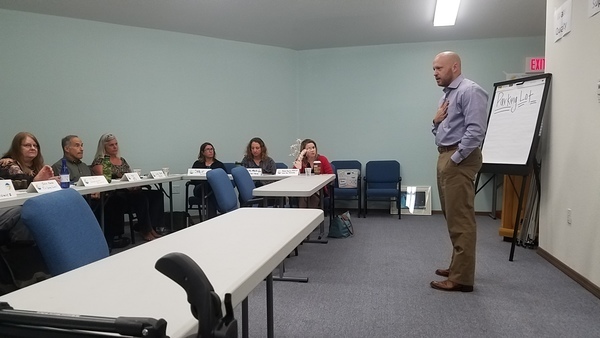Someone said there’s an actual scientist in the room, so let’s hear from him. So WWALS Science Committee member Geology Professor Can Denizman said a few words about modeling karst limestone aquifers such as the Floridan Aquifer. This was at the March 3, 2017 meeting of the new Environmental Advisory Work Group of the Suwannee River Partnership.
Here’s video followed by a transcript:
Transcript:
This is a karst aquifer, that means it is that means it is anisotropic, and it is not homogenous. That is a completely different ballgame, and not everybody knows how to model that system.
You can have regional models like generally the water flows southeast or southwest; you can talk about that. But in terms of local modeling, this spring for example. What happens if you pump so much water to the springs of, I don’t know, Silver Springs, what happens?
These are really hard questions that cannot be answered by conventional groundwater models that rely on homogenous isotropic conditions known as Darcian assumptions. You cannot use those models. They’re not going to give you anything. Unfortunately, as far as I know, most of these models are based on these homogenous isotropic conditions, that, which is not true!
I mean in karst, you know you can dig a hole here and you hit a cave, and you can dig a hole there and you’ve got rock. So permeability here is infinite, and permeability here is like I don’t know, next to zero. So how is it homogenous? How is it isotropic? It is extremely difficult to model this.
And unfortunately, most of the USGS models are based on the Darcian models. They work fine for alluvium aquifers, for sandstone aquifers….
Not coincidentally, WWALS made these same points in our comments on the North Florida Regional Water Supply Plan (NFRWSP). See especially page 5, Data Availability and Model Calibration. For a longer talk with more background, see WWALS video of Prof. Denizman at a more recent WWALS Public Meeting.
Due to multiple requests multiple SRP attendees, I believe the recommendations from the March 3rd SRP meeting included better data, modeling, and peer review.
I did not video the entire session, because the attendees were mostly not public officials, and when offered video or not to video, they prefered not to video.
Noah Valenstein, E.D., SRWMD
Once again I’d like to thank Noah Valenstein, Executive Director, Suwannee River Water Management District, for organizing this meeting.
-jsq, John S. Quarterman, Suwannee RIVERKEEPER®
You can join this fun and work by becoming a WWALS member today!
Short Link:


